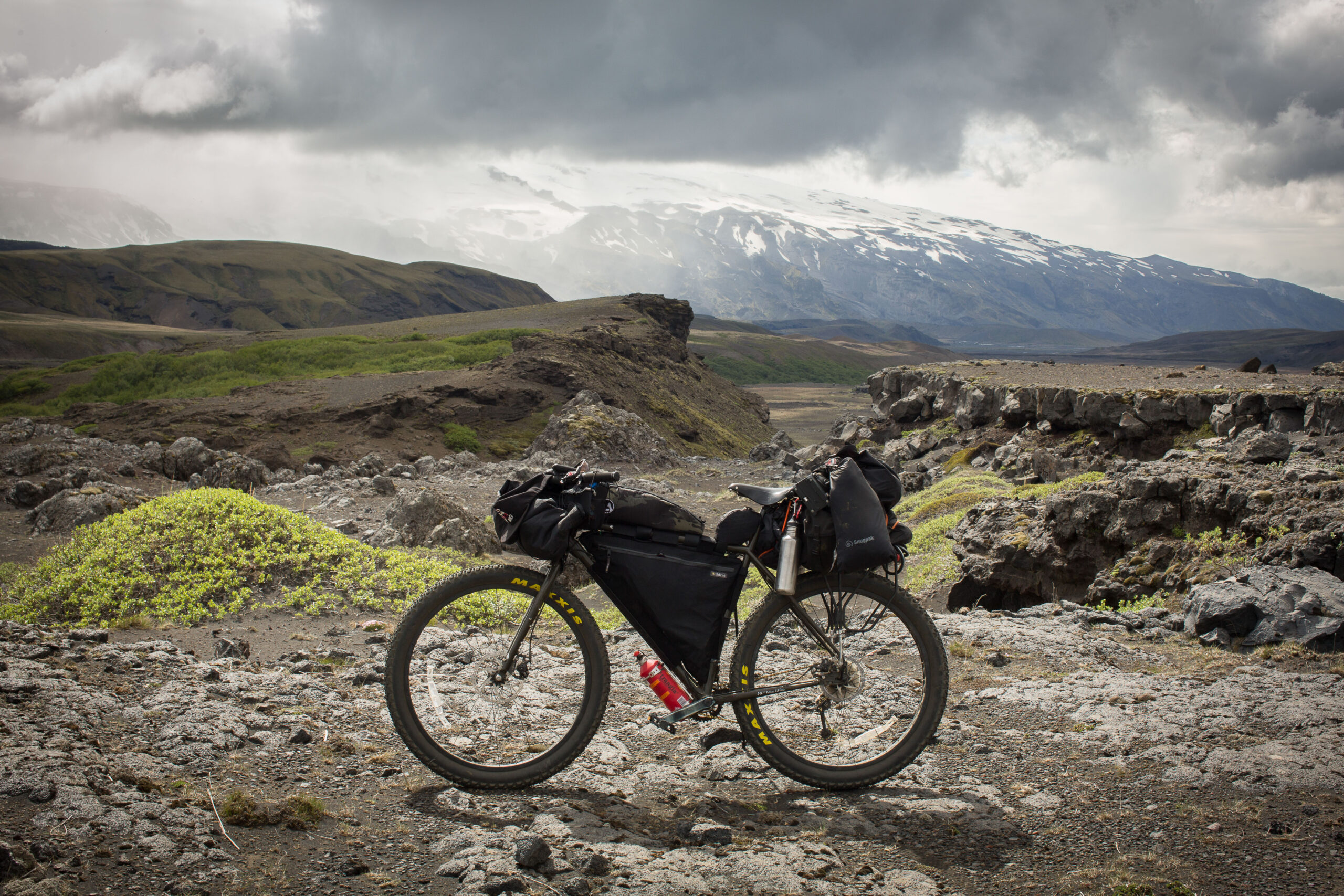If there’s been one ride that both completely broke me and reaffirmed that bikepacking completes me, it was Iceland. Home to some of the planet’s most active volcanoes, Europe’s largest glacier (Vatnajökull Glacier), geysers, stunning mountains, rugged coastlines, trolls and elves (yep), and, of course, the Icelandic Highlands. This country has gained a legendary reputation for adventure cycling over the past decade, and the recent two-wheeled expeditions of world-renowned adventure photographer Chris Burkard have further bolstered this status. Thus, with Iceland becoming one of the first countries to reopen its borders to vaccinated tourists, I figured it would be useful to revisit my Icelandic experience and share tips for bikepacking this epic country.

Iceland is one of the most beautiful countries in the world, and it’s very easy to be mesmerised by photos shared online. This content, if anything, is an injustice to the reality, which is even more wondrous. Nevertheless, it’s important to identify that human-powered adventures in this country are subject to inclement weather conditions on par with its beauty. If you’re not a fan of “type-two” fun, then riding here could be tiresome, particularly if you plan to bikepack into the largely uninhabited interior. Riding during the Icelandic wintertime requires a high level of experience and will drastically restrict what’s possible. I wouldn’t recommend it unless, like Chris Burkard, you have the expertise, resources, and support necessary for a ride like this.
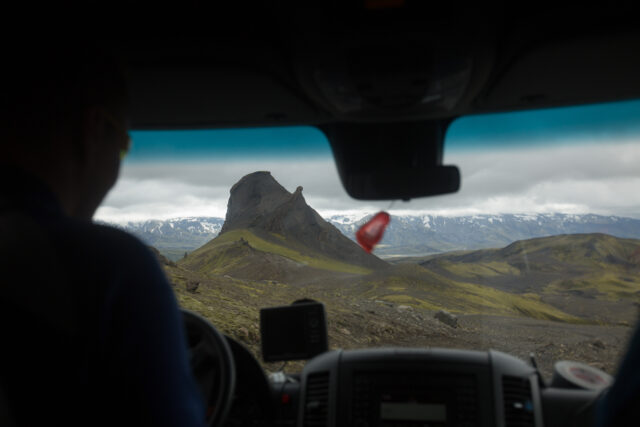
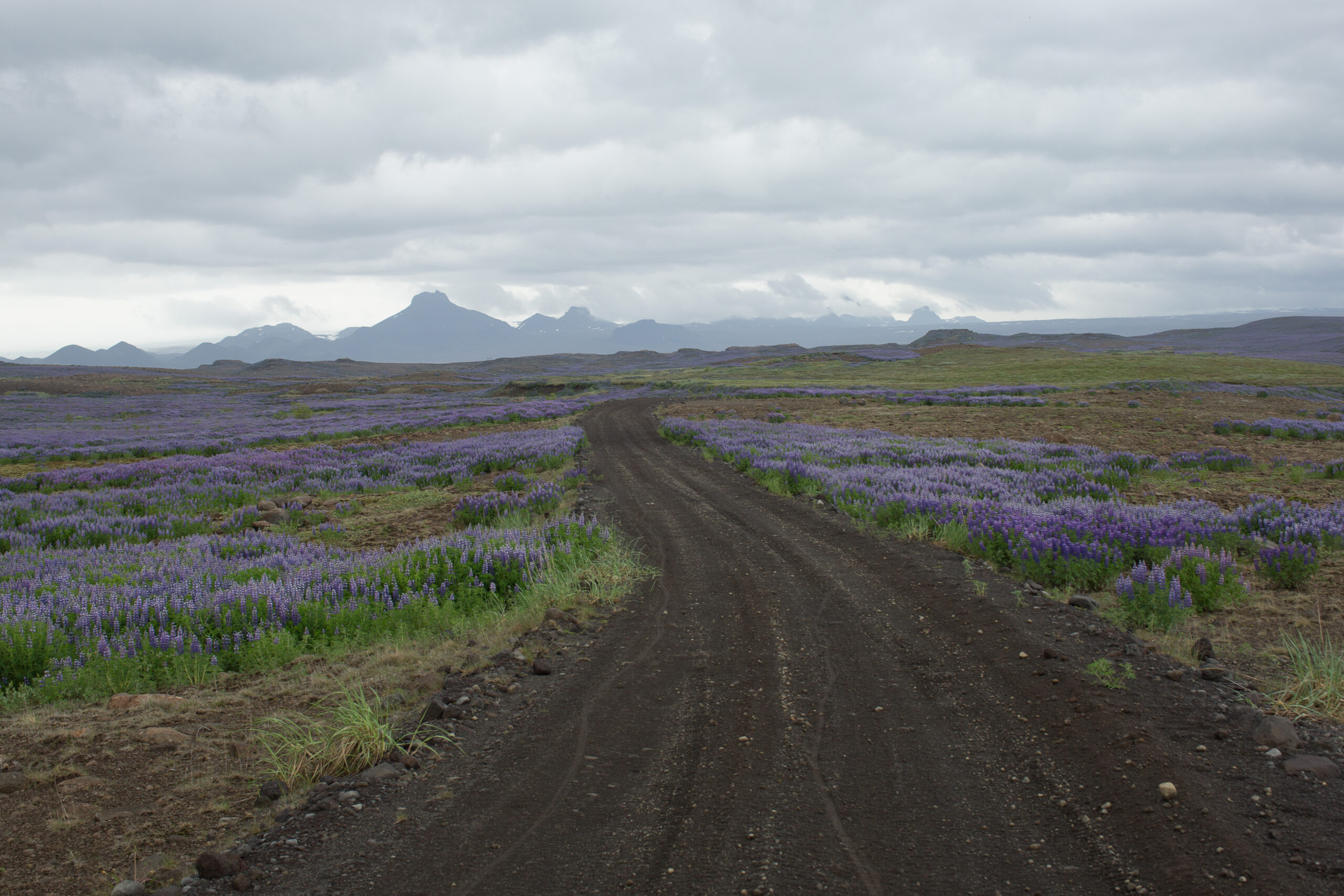
Safety aside, heavy snowfall and freezing conditions limit your ability to explore the highlands, which in my opinion, are the primary motivation for bikepacking Iceland. Hence, summertime is arguably your best option, but late spring or early autumn are good alternatives. The downside of riding in the summertime, like so many places, is heavy tourism. Fortunately, most visitors will stick to the iconic Ring Road and only venture inland intermittently, which is good news for bikepackers who can almost exclusively explore the F-Roads. If like me, your intentions are to pedal straight into the Icelandic Highlands, then there are some things to consider.

The country’s vast interior is largely uninhabited, so you need enough supplies to venture in and out. Moreover, the riding is often hard going, and I vastly underestimated how many calories I’d require. This issue was particularly pertinent to my ride, as a continuous calorie deficit, combined with freezing river crossings (which were higher that year due to heavy rainfall), meant I got really sick. I intend to ride in Iceland again, but this time I’ll be incorporating the Revelate Designs Nano Panniers, with the sole intention of storing food. I love these panniers as they weigh just 16.4 ounces but are supremely tough and well suited to heavy provisions. Sure, this means a heavier bike, but you’ll eat through this weight quickly, and it’s better than running out of food in the middle of the highlands (trust me, I know).
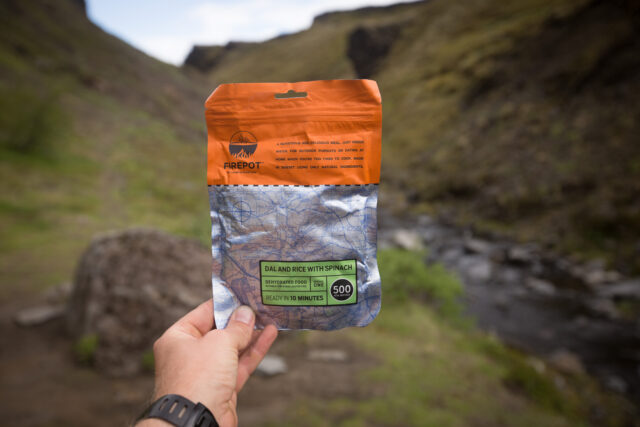

In Iceland, the weather can change hourly, so ensure you’re prepared for all four seasons in a day. If you’re riding outside of wintertime, there’s one element beyond any other that will have you pleading with the Norse Gods: wind. I’ve since lived in the Arctic Circle and have somewhat acclimatised to strong winds, but I’d never experienced anything like it before Iceland. On a few days, it was impossible to ride or pitch the tent, with wind so ferocious that even pushing the bike required a gruelling effort. Check the forecast regularly, and whenever possible, ride when the weather is more favourable. This may require sleeping in late or finishing early, but 24-hour daylight during summer means you can always make up time. On some days, I napped during the afternoon to avoid bad weather but then rode into the early hours of the morning under the midnight sun, which was epic. Unfortunately, bad weather isn’t always avoidable, particularly when you have set deadlines, so allow additional time for delays. Finishing early, you can enjoy a day or two in Reykjavík, whereas not allowing enough time often distracts from the experience and requires a brutal push to the finish (after experiencing both, I know which one I prefer).

River crossings are an almost unavoidable certainty if you plan to ride into Iceland’s interior. If there’s one danger above any other when exploring these landscapes during summertime, it’s fast-running water. These vary in speed, depth, and temperature but should all be treated with the utmost respect. Heavy snowfall during the wintertime combined with glacial melt ensures fast-flowing rivers are a regular obstacle. It’s important to be prepared and take your time when crossing. Crucially, if in doubt, turn back and find another route. Or, if time is on your side, see whether the water drops later in the day. Pack suitable footwear, but avoid generic sandals as they offer limited protection against sharp rocks (Crocs Swiftwater Mesh Deck Sandals are a good option because they offer adequate protection whilst being extremely light/packable). Additionally, it’s worth carrying some swim shorts for deeper water to spare your riding gear (or strip down to underwear). A few quality dry bags are also advisable for valuables in case you have a mishap.
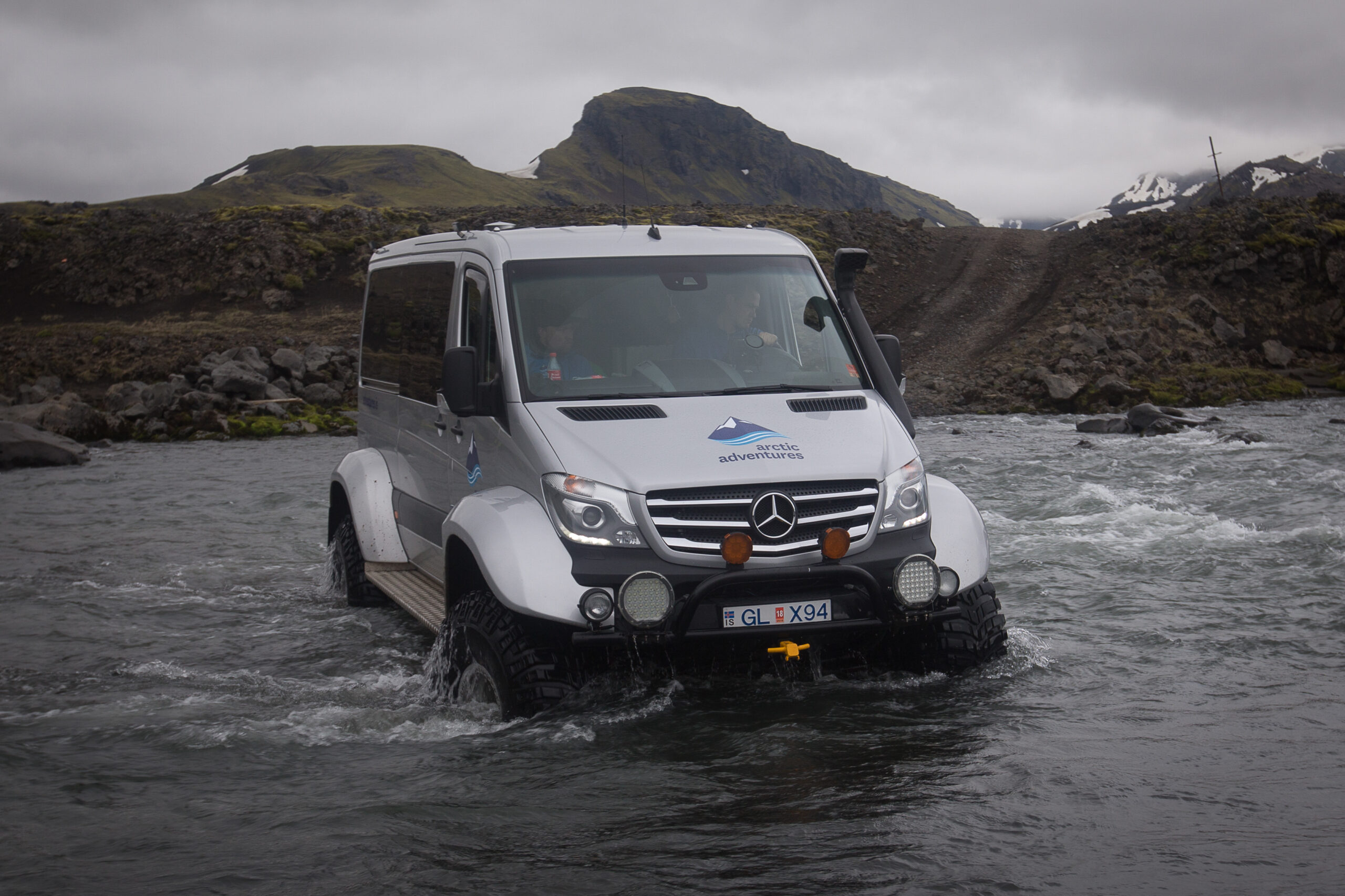
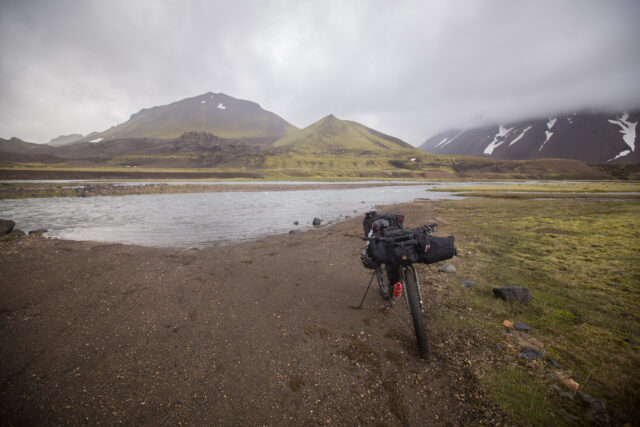
The first step is identifying a safe place to ford. As a general rule, cross at the widest section, and never assume depth is consistent (there could be a sudden drop). Tire tracks can also indicate a suitable place to traverse, but remember, Icelandic super jeeps can safely wade much deeper than you. The majority of rivers I frequented were fast running, and even knee-deep water was enough to test my balance (particularly as the river beds are scattered with loose rocks that can shift underfoot). Once at waist level, it’s easy to be swept off your feet, especially when carrying a loaded bike.
Initially, I’d recommend testing your chosen crossing without bike/gear, remaining vigilant (face upstream and shuffle sideways for optimum stability). If it’s safe, then decide whether you’re confident with the full weight of the bike on your shoulders (pushing generally isn’t an option in fast-running water, except when shallow) or whether unloading some gear and making multiple trips would be more sensible. I took valuables over first in dry bags to ensure their safe passage unless I deemed multiple crossings unwise. Take time to evaluate your ability, and never feel embarrassed to turn back and find another route.
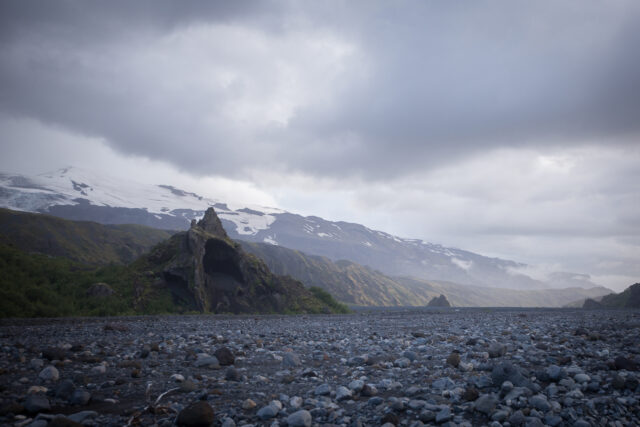
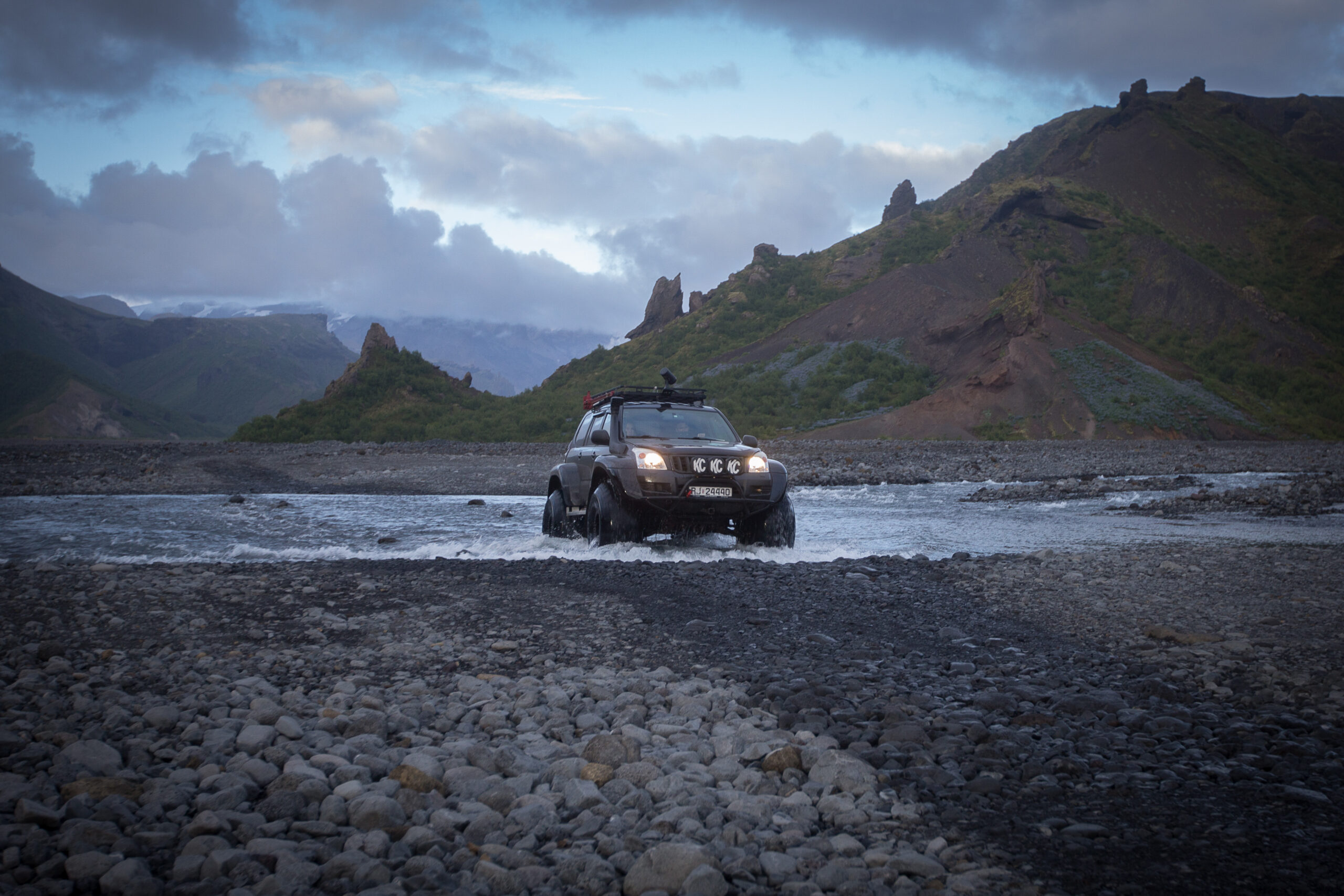
I rode my Surly ECR (surlybikes.com) in Iceland, and when I return, I’ll be using it again. This is generally my go-to bike for big expeditions where speed isn’t essential but all-terrain performance and load capacity are priorities (I’ve linked alternative bikes below). This is arguably Surly’s most iconic all-terrain adventure bike and is designed accordingly. The F-Roads can be almost any trail that’s manageable with an Icelandic 4×4 (remember these are often heavily modified super jeeps), but they’re not always conducive to cycling. Larger tyres such as the ECR’s 3-inch one will make a difference in this environment (especially when aired down); still expect a fair share of hike-a-biking and shoes full of volcanic sand. I met a couple using gravel bikes during my trip, and they said it had been pretty rough. I’m not sure I’d want to go any smaller than the 2.35-inch tires on my Karate Monkey, but I think the sweet spot is 2.5- to 3-inch sizes. Fat bikes (4- to 5-inch tires) are also a great option, but possibly overkill as the 3-inch one handled everything just fine whilst not drastically hampering cruising speed. As always, I’m going to recommend a streamlined bikepacking bag setup for an adventure such as this, although as discussed above, you’ll want to make plenty of room for supplies. A front/rear rack offers additional real estate to secure gear. I’ve just added the Surly 24 Pack Rack to the front of the ECR for this reason, as they also act as convenient handles for lifting the bike across rivers. I’m forever looking at ways to lighten my rig, but in harsh, remote environments, ensure provisions are the priority (a balance I didn’t get right on my ride). I’ve linked a number of articles below that detail some of my favourite bags/equipment for bikepacking expeditions.
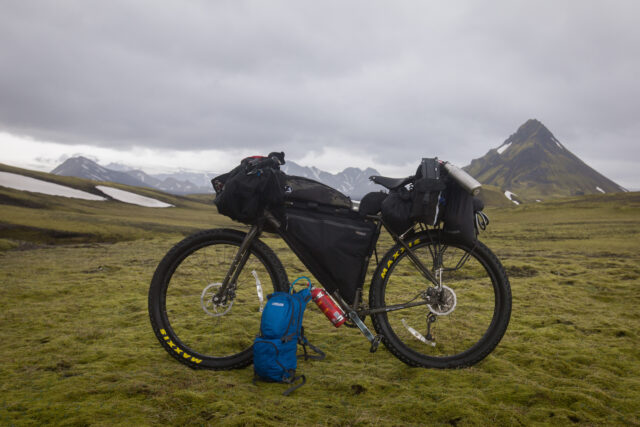
Chris Burkard (alongside Emily Batty, Eric Batty, and Adam Morka) recently completed an epic 606-mile (975-kilometre) bikepacking traverse of Iceland from east to west, utilising as many remote stretches of interior roads/trails as possible. A film was produced in conjunction with Sony called A Line in the Sand, which acts as a superb visual reference for many of the challenges I’ve explored in this article. Chris is currently back in Iceland to tackle his most extreme ride to date, an incredible north to south unsupported winter fat bike expedition. I’m excited to be speaking to Chris on his return, so stay tuned for a full interview in the coming months.
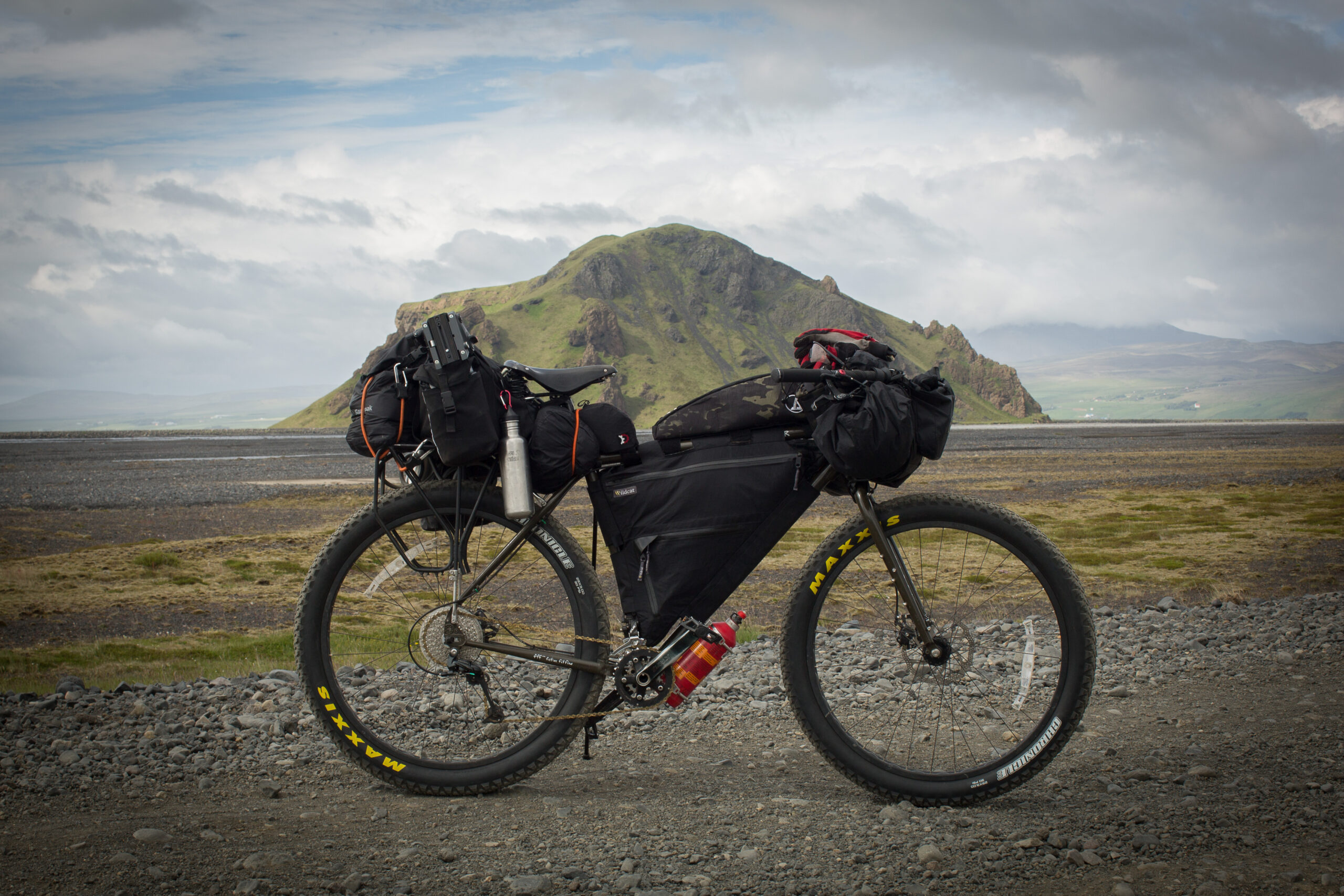

My Bikepacking Gear Recommendations:
Kitchenware
Clothing recommendations
Bedtime accessories
Bikepacking bags
Chris Burkard:
chrisburkard.com
A Line in the Sand
Surly ECR Alternatives:
Bombtrack Beyond+ ADV
Salsa Fargo
Tumbleweed Prospector
Velo Orange Piolet
Jones Plus SWB
Marin Pine Mountain 2
Additional Resources:
Seven tips for Bikepacking Iceland
bikepacking.com
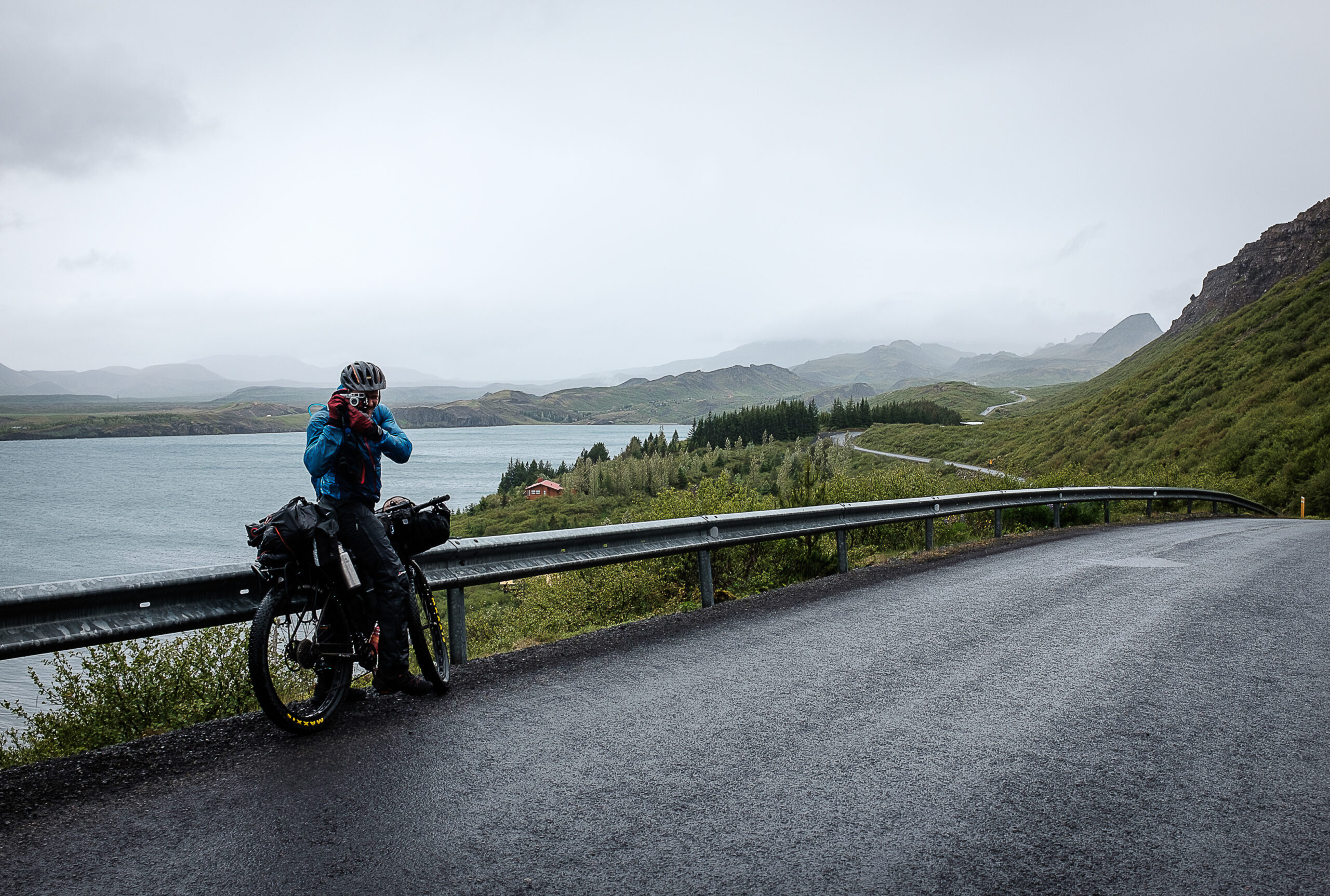
Our No Compromise Clause: We carefully screen all contributors to make sure they are independent and impartial. We never have and never will accept advertorial, and we do not allow advertising to influence our product or destination reviews.


